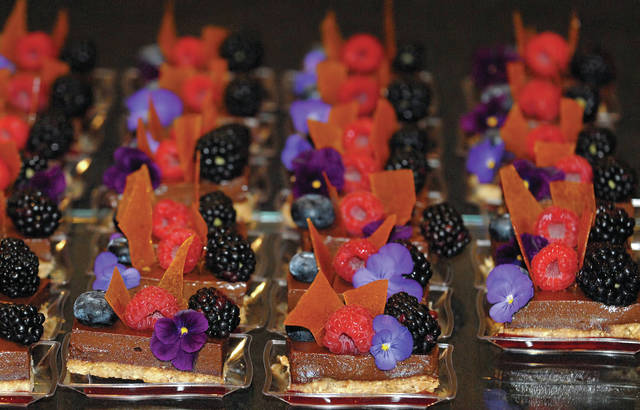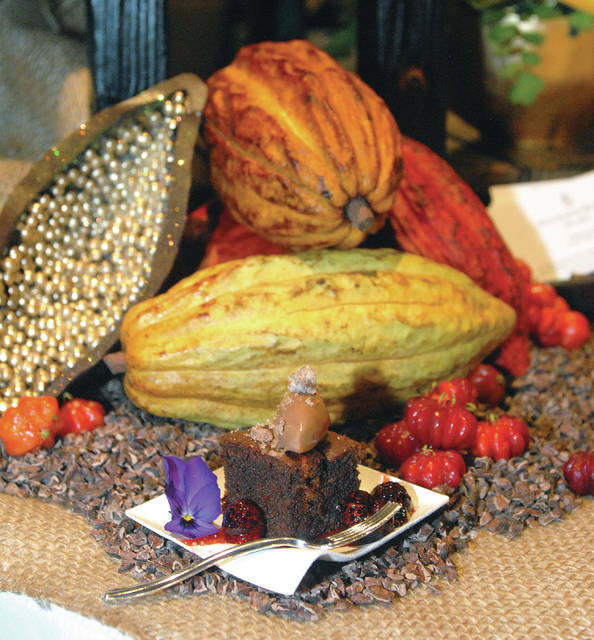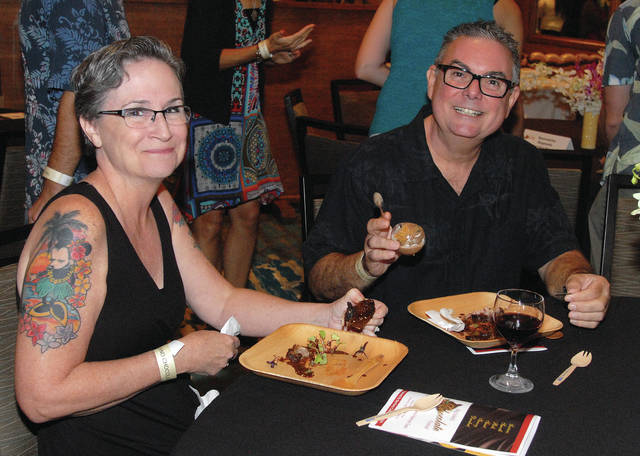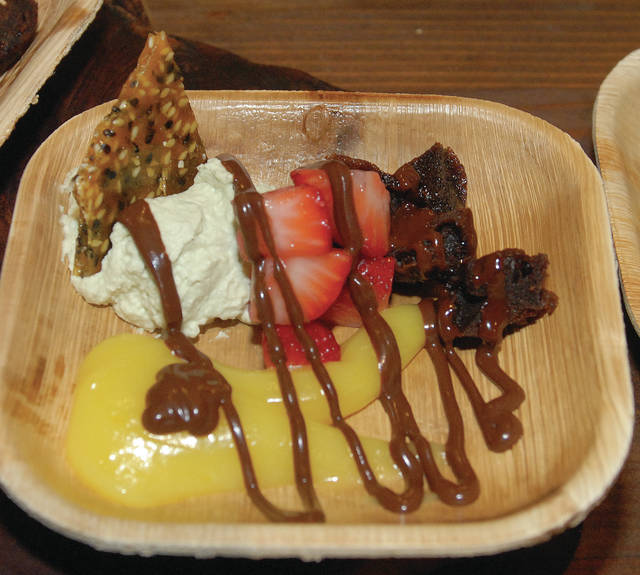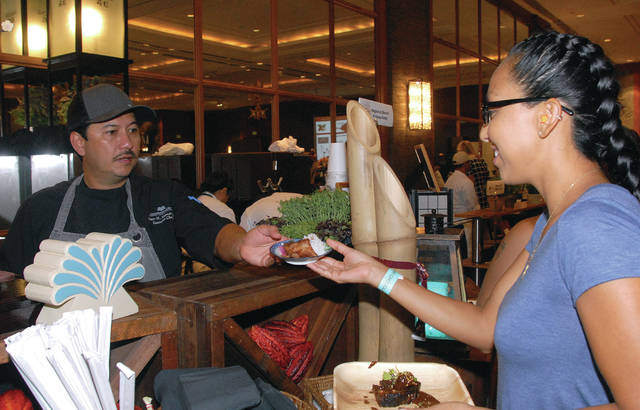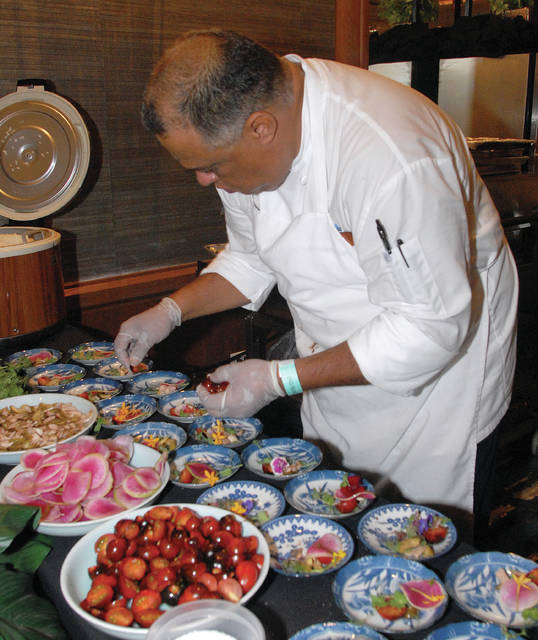Big Island Chocolate Festival wraps up
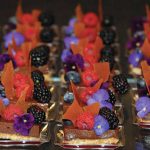
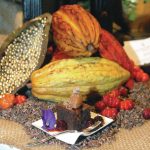


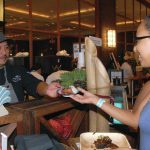
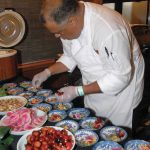
SOUTH KOHALA COAST — Born on a tomato and vegetable farm in the heart of Silicon Valley, Marty Mazzanti’s been in agriculture his entire life.
Three years ago, Mazzanti, who founded the produce marketing and distribution company The Produce Exchange, sold his company, retired and moved to Kona, where his daughter and son-in-law have lived for a few years.
He bought — and is currently remodeling — a home in Makalei Estates, 1,800 feet up in Kona coffee country.
“And while I totally enjoy my coffee every day,” Mazzanti said Friday, “when I heard that Hawaiian chocolate enjoyed not only premium quality but also premium prices, that just, with my background, that smelled like a business opportunity.”
Mazzanti, one of many cacao farmers and entrepreneurs at this year’s Big Island Chocolate Festival, seems to be right.
The festival started on Friday at the Hapuna Beach Prince Hotel, featuring seminars, contests and culinary demonstrations before culminating in a gala Saturday night. That gala gave chocolate fans the chance to taste sweet and savory snacks as chocolatiers promoted their craft.
“We’ve worked really hard to spread the gospel, as we say: the gospel of chocolate,” said Mark Miller of Original Hawaiian Chocolate Factory in Keauhou.
Miller credits the company’s founders, Bob and Pam Cooper with kicking off Hawaii’s cacao industry into a quality unique product worthy of being treated as a fine food.
“Bob, I think, was one of the first to really come in and say ‘Hey look, Hawaii is special; Kona is special. If Kona coffee is special, Kona chocolate must be equally special,’” Miller said at the gala.
He said he hopes those coming to the gala and diving into Hawaii chocolate walk away with an understanding “just how distinctive chocolate from Hawaii is and how special that is.”
And from the looks of it, Hawaii’s chocolate has no trouble winning fans. That includes Lori Kahawaii, attending for her third time, and first-time attendee Jackie Rasay, both of Kona.
“It’s the food,” Rasay said, “because I love food but I really, really love chocolate. And you know, it’s so elegant.”
“And the creativity that the chefs and the culinary students put into their creations,” added Kahawaii. “The sweet and the savory.”
In recent years, the cacao farming industry has been on the rise, with farmers across the state planting more trees, according to data presented Friday by Skip Bittenbender, extension specialist in tropical plant and soil sciences at the University of Hawaii at Manoa’s College of Tropical Agriculture and Human Resources.
“The industry is definitely growing,” he said following the seminar. “It’s becoming much more professional.”
Since 2010, cacao acreage across the state has grown from more than 20 acres to under 120 acres last year. That number could hit the equivalent of 400 acres by 2021.
So what to do with all that chocolate?
On the Big Island, 41 percent of farmers said they expect to be selling their cacao as chocolate in five years, a larger group than those who said they plan to sell cacao as fresh beans, dry beans or pods.
There are some concerns in the field, such as black pod disease, a pathogen affecting cacao crops in East Hawaii.
“A lot of ground there would be good for growing cacao, but if they have disease that destroys their pods too many times, they won’t be growing,” Bittenbender said.
Researchers are exploring seedlings that demonstrate resistance to that pathogen and working on ways to improve drying in the process at East Hawaii farms.
Bittenbender also said that while cacao acreage is growing, labor limitations will likely keep production from reaching the same scale as coffee production here.
The expansion of coffee throughout Hawaii was due in part to mechanical harvesting. Cacao needs hand labor to harvest.
“It’s not going to be mechanically harvested,” Bittenbender said. “And so this can limit the expansion.”
But as he told the crowd at his seminar, the point isn’t to compete with companies like Hershey’s.
“We’re going to be focusing I think primarily on the restaurant (industry) as well as our visitors,” he said in the seminar. “Because when you’re a visitor to Hawaii, you want to take a little piece of paradise home with you.”
Chocolate, he said, “is going to be another one of our suitcase exports, along with coffee and slippers and hats and aloha shirts — chocolate bars.”
Mazzanti said his farm, which in its early stages has about 500 trees, is focused on growing heirloom varieties, which can turn out “extraordinary flavor.”
“And that’s what I’m interested in,” he said. “If we’re going to be small, we need to be unique; and we need to be extraordinarily good.”
And Mazzanti, who said he already enjoys chocolates from around the world, has another motivation behind the venture.
Even though he grew up on a farm, he said, his children didn’t, instead growing up in a suburban area of San Francisco.
“And I regret that. I regret that they didn’t have the farm experience,” he said. “And I want my two grandchildren to have the farm experience.”

